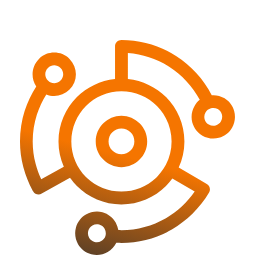Aerial photogrammetry enables precision agriculture by capturing high-resolution images of fields. These images can be used to create detailed maps, allowing farmers to analyze variations in soil health, moisture levels, and crop conditions across their fields. This information helps in optimizing resource allocation, such as water and fertilizers, resulting in improved crop yields and resource efficiency.
Agriculture
How Depthscape Helps in Agriculture

Applications
Equipped with specialized sensors, including multispectral and thermal cameras, our drones elevate crop health monitoring to unprecedented levels. By capturing images that delve beyond the visible spectrum, our technology provides insights into areas of stress, disease, or nutrient deficiencies at an early stage. This early detection capability is instrumental in empowering farmers to take targeted actions swiftly, such as adjusting irrigation or applying specific treatments. The result is a proactive approach that mitigates potential issues, maximizes crop productivity, and ensures the overall health of the agricultural enterprise.

In times of drought, our drone system becomes a pivotal asset for farmers. By providing real-time information on soil moisture levels and crop stress, our technology enables farmers to implement timely irrigation strategies and drought response measures. This proactive approach ensures that farmers can navigate through challenging environmental conditions, preserving crop health and mitigating potential yield losses. Our drone system becomes an essential ally in fostering resilience and sustainability in the face of adverse climatic events.

Aerial photogrammetry with our drone system proves invaluable in estimating crop yields. The system generates precise 3D models of fields, offering detailed information on crop height, density, and overall health. This data serves as a robust foundation for accurate yield predictions. Armed with this information, farmers can make informed decisions regarding harvesting schedules, ensuring optimal timing for the harvest and subsequently streamlining post-harvest processes. Our drone system thus becomes an indispensable tool in enhancing overall yield and operational efficiency

Our drone system revolutionizes the way farmers plan and manage their fields. By harnessing the capabilities of aerial photogrammetry, farmers can create detailed maps that go beyond traditional methods. These maps assist in identifying optimal planting patterns, assessing drainage systems, and planning the layout of irrigation infrastructure. The accuracy and comprehensiveness of these field maps contribute significantly to overall farm management, facilitating strategic decision-making and optimizing the utilization of resources.

Pros
Aerial photogrammetry reduces the cost of data collection compared to traditional methods. Drones can cover large areas quickly, capturing high-resolution images with minimal human resources.
Drones equipped with cameras enable real-time monitoring of crop conditions. This timely information allows farmers to respond promptly to emerging issues, such as pest infestations or disease outbreaks.
Aerial inspections are non-intrusive and do not require physical access to the fields. This minimizes the impact on crops and allows for more frequent and comprehensive monitoring.
Drones equipped with high-resolution cameras deliver detailed images and maps, offering a level of spatial resolution that is crucial for precision agriculture. This high level of detail allows farmers to analyze individual plants, identify specific issues, and implement targeted solutions for optimized resource use.
Drones enable rapid and efficient crop scouting over large areas, saving significant time compared to traditional manual methods. Farmers can quickly survey fields, identify potential problems, and prioritize areas that require attention, enhancing the overall efficiency of farm operations.
Drones can be equipped with various sensors, including multispectral and thermal cameras, expanding their capabilities for diverse agricultural applications. This versatility allows farmers to gather comprehensive data on crop health, moisture levels, and other factors critical for informed decision-making.
The use of drones minimizes the environmental impact associated with traditional agricultural practices. By providing targeted and data-driven interventions, farmers can optimize the use of resources such as water, fertilizers, and pesticides, contributing to more sustainable and eco-friendly farming practices.
Drones assist in inspecting agricultural infrastructure, including irrigation systems and storage facilities. Regular inspections enhance the reliability of farm equipment and infrastructure, reducing the risk of unexpected failures and contributing to overall operational efficiency.


